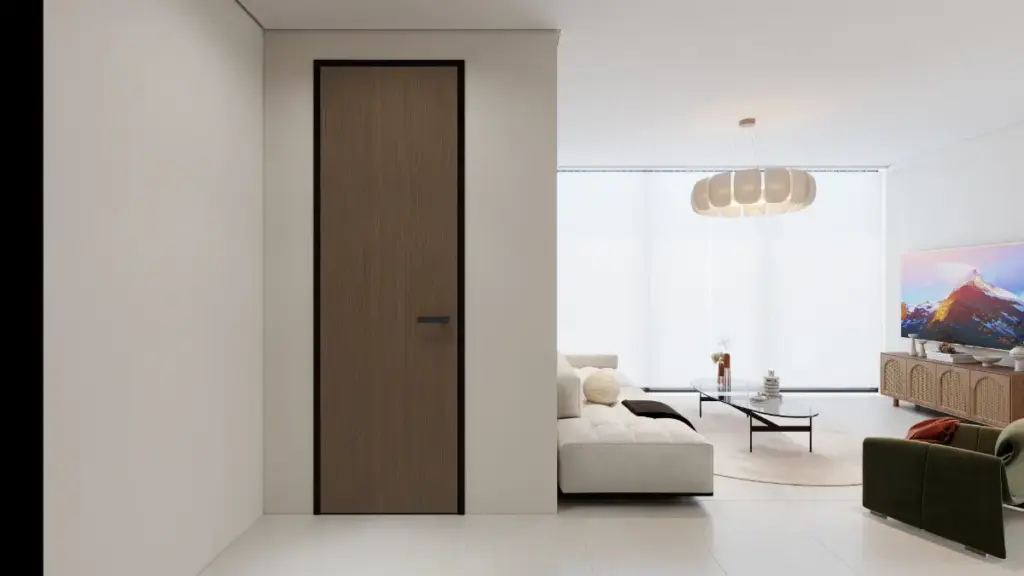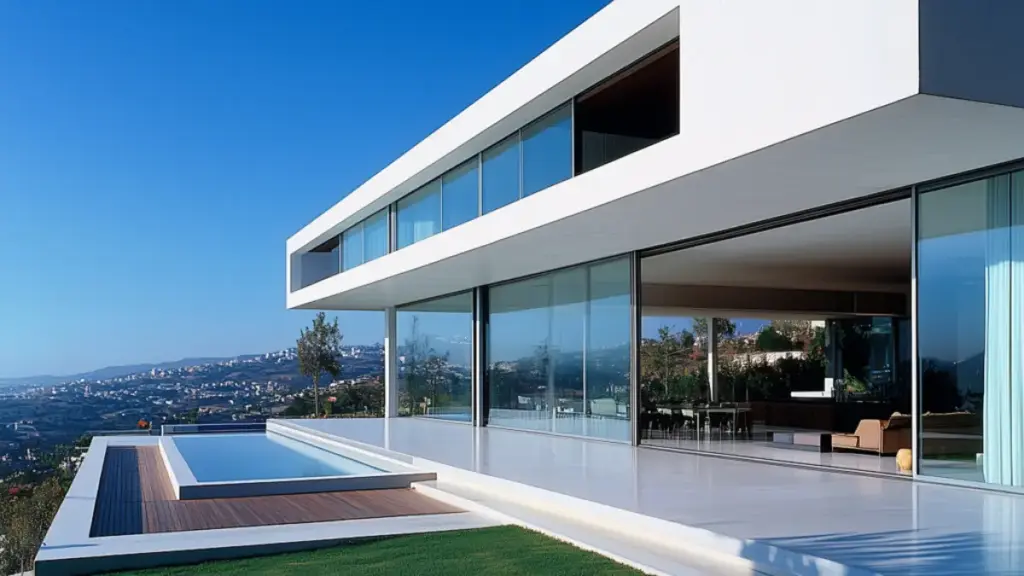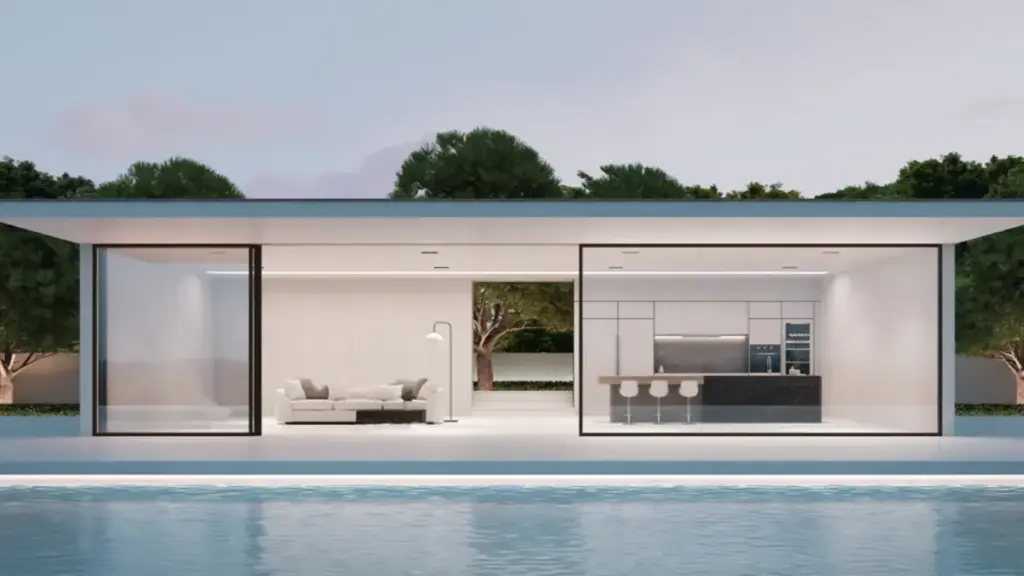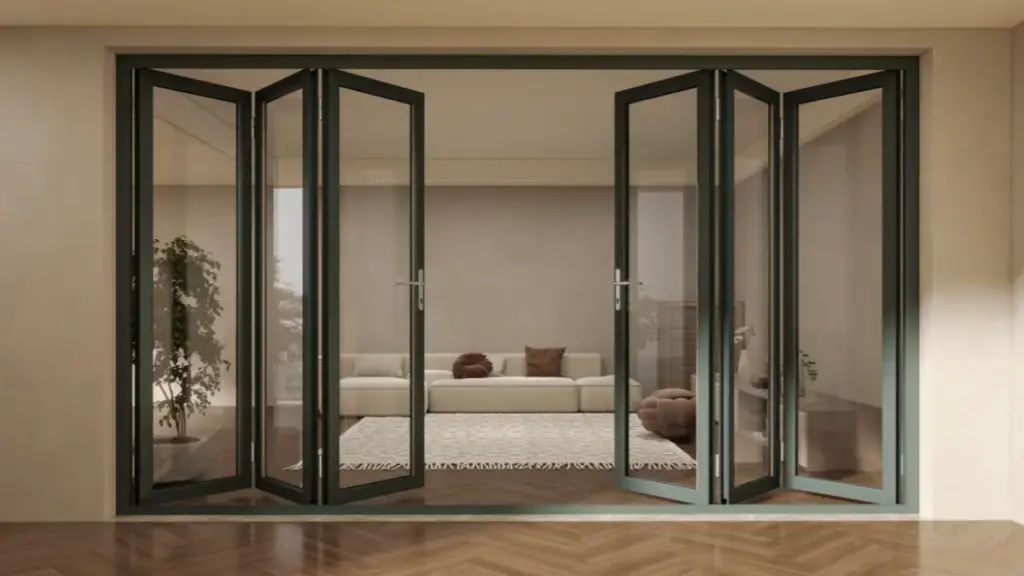Sliding doors are more than just a functional entryway—they’re a design statement that can transform a room’s flow, light, and style. Whether you’re renovating a living room, upgrading a patio, or adding a space-saving solution to a tight hallway, choosing the right sliding door requires balancing practicality, 미학, 그리고 예산. With so many options on the market, it’s easy to feel overwhelmed. That’s why we’ve created this article—to walk you through every step of the process, from defining your needs to maintaining your new doors for years to come.
Define Your Needs: Start with Space and Purpose
Before diving into materials or styles, clarify how and where your sliding door will be used. Sliding doors shine in specific scenarios, and matching their function to your space is key to avoiding regrets.
Patio or outdoor access: If you’re connecting an interior room to a deck, garden, 또는 발코니, prioritize large, durable doors that maximize natural light and withstand the elements. Look for weather-resistant materials and wide panels to blur the line between indoor and outdoor spaces.

룸 디바이더: For open floor plans, sliding doors can create flexible zones (예를 들어, separating a home office from a living area). Opt for lighter materials like glass or frosted panels here—they maintain openness while adding privacy when needed.
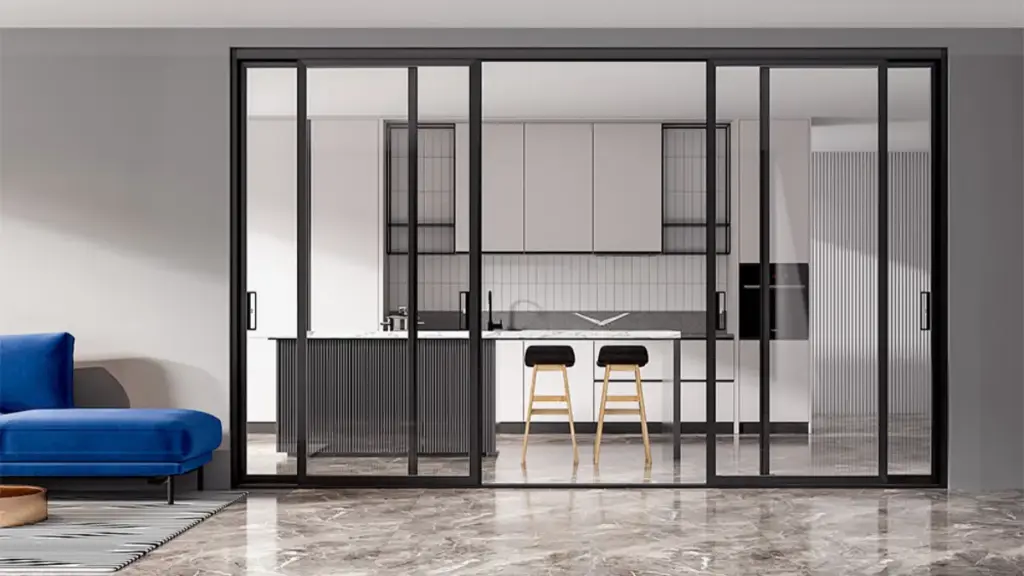
Closets or small spaces: In bedrooms or hallways, sliding closet doors save space by eliminating the need for swing clearance. Compact, lightweight options (like vinyl or mirrored panels) work best here.
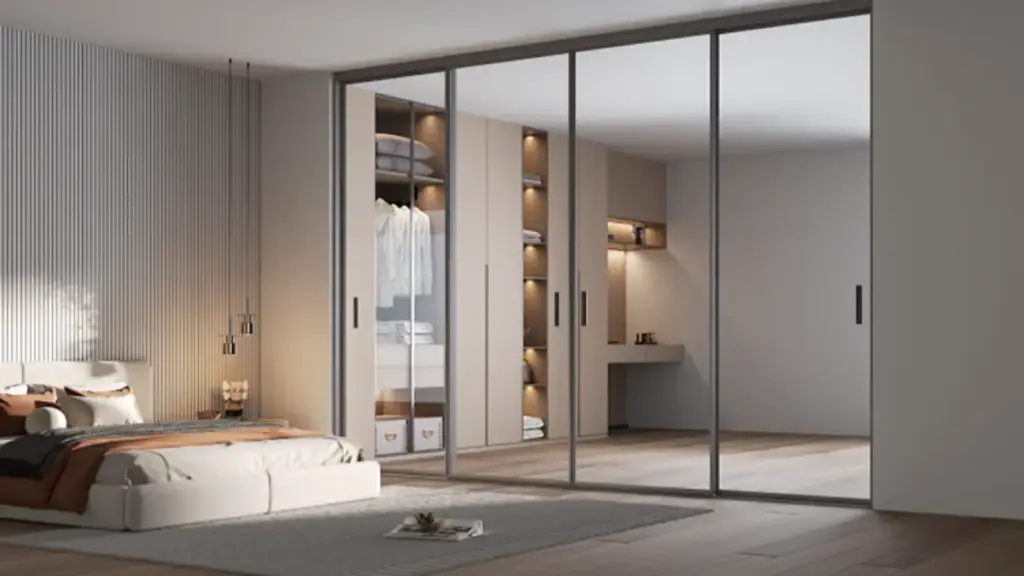
Ask yourself: How often will the door be used? High-traffic areas (like patio doors) need sturdier hardware, while low-use spaces (like a guest room closet) can prioritize cost or style. Do you need insulation? Doors leading outside require better thermal performance than interior dividers. Answering these questions narrows your options from the start.
Sliding Door Materials: Compare Wood, 알류미늄, 비닐, and More
The material of your sliding door impacts durability, 유지, 스타일, 그리고 비용. Here’s how the top options stack up for home use:
목재: A classic choice for traditional or rustic homes, wood offers warmth and natural beauty. Solid wood (like oak or mahogany) is sturdy but prone to warping in humid climates. Engineered wood (plywood cores with veneers) resists moisture better and costs less. Note: Wood requires regular staining or painting to prevent rot—ideal for dry, covered spaces (like interior room dividers) but high-maintenance for outdoor-facing doors.
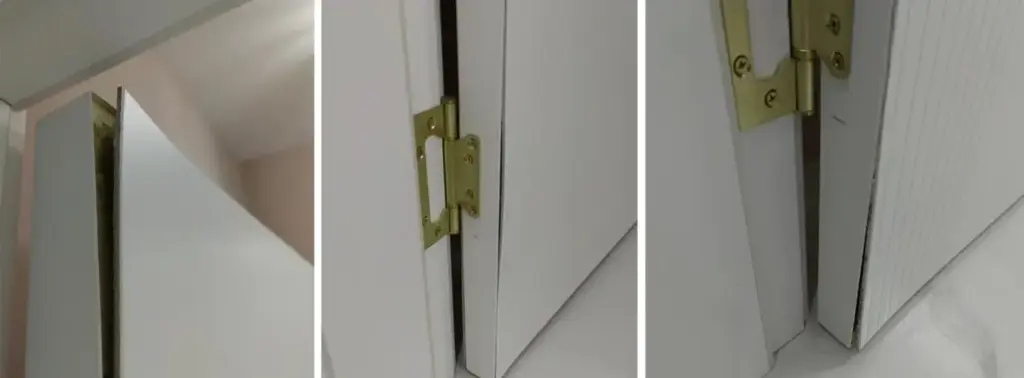
알류미늄: A favorite for modern homes, aluminum is lightweight, rust-resistant, and incredibly durable. Its slim profiles maximize glass space, making it perfect for patio doors that prioritize light and views. Aluminum is low-maintenance (just occasional cleaning) and works in all climates, from coastal humidity to snowy winters. Many manufacturers (like us) offer custom powder-coated finishes, so you can match your home’s exterior or interior palette.

비닐: A budget-friendly option, vinyl is moisture-resistant and energy-efficient, thanks to its insulating properties. It’s a solid choice for humid areas (like bathrooms or basements) but can feel less premium than wood or aluminum. Vinyl is low-maintenance but may fade in direct sunlight over time, so avoid it for south-facing patio doors in hot climates.
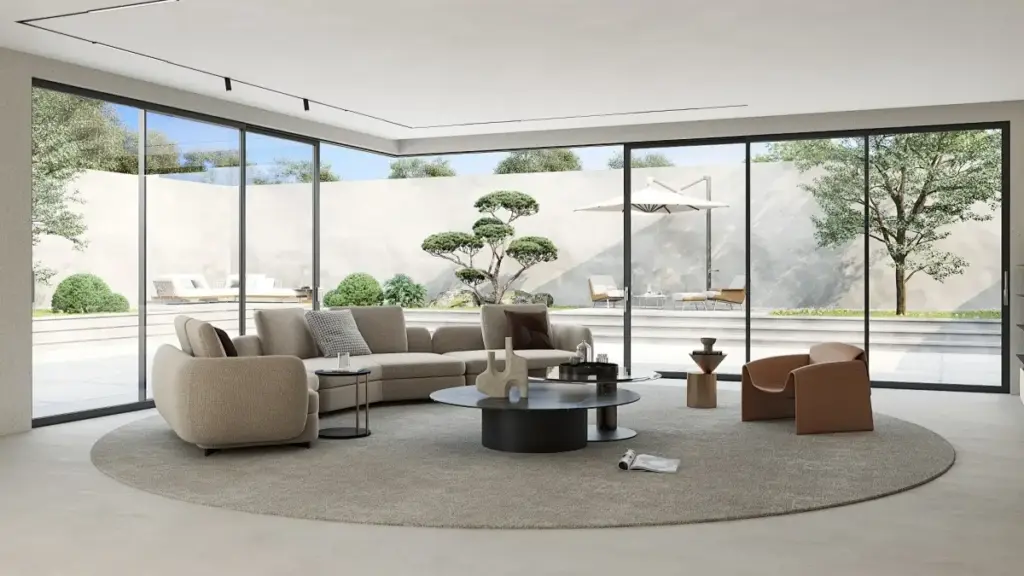
Fiberglass: A middle-ground option, fiberglass mimics wood’s look but resists rot, 뒤틀림, and pests. While durable for outdoor use and requiring minimal upkeep, they are pricier than vinyl. Unlike aluminum doors, fiberglass is a good choice if you want wood-like aesthetics without the maintenance hassle.
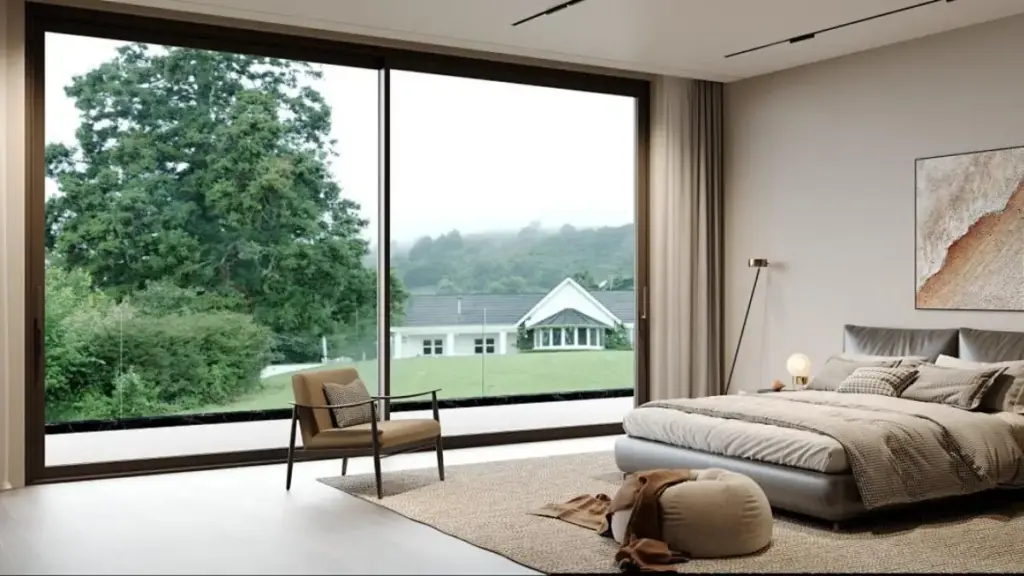
For most homeowners, aluminum strikes the best balance of durability, 스타일, and versatility—especially for outdoor-facing sliding doors.
Size and Fit: Measure Twice, Buy Once
A sliding door that’s too small looks awkward; one that’s too large won’t function properly. Getting the size right starts with precise measurements, as outlined in our 내부 도어 크기 가이드.
Rough opening: Measure the width and height of the space where the door will be installed, including the frame. For patio doors, account for any trim or siding that might affect the fit.
Panel count: Sliding doors typically come in 2-panel (most common), 3-panel, or 4-panel designs. A 2-panel door works for standard openings (6–8 feet wide), while 3–4 panel options suit larger spaces (10+ feet) and create a more dramatic “wall of glass” effect.

Clearance: Ensure there’s enough space for the door to slide. For 2-panel doors, one panel slides past the other, so you’ll need a track length equal to the total width. For multi-panel doors, check if they stack (fold) or slide past one another—this affects how much space they occupy when open.
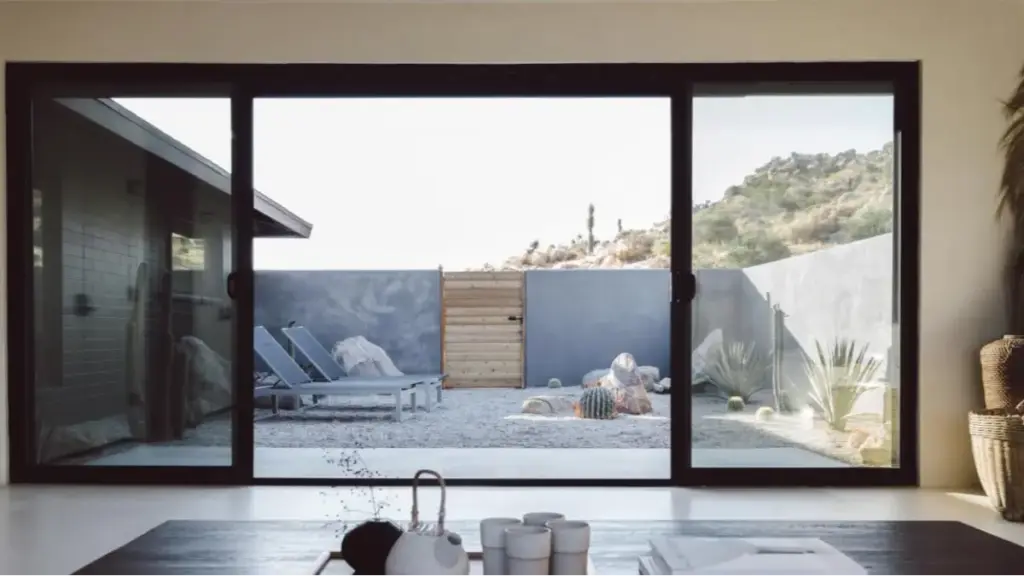
Pro tip: If you’re replacing an old door, measure the existing frame but confirm with the manufacturer—old homes often have non-standard sizes. When in doubt, hire a professional to measure; many manufacturers (including ours) offer free measurement services to avoid costly mistakes.
Energy Efficiency and Soundproofing: Key Features for Comfort
A sliding door that leaks air or lets in noise can undermine your home’s comfort and increase utility bills. Prioritize these features:
Glass type: Double-glazed glass (two panes with an air or gas fill) insulates better than single-pane options, reducing heat loss in winter and heat gain in summer. Low-emissivity (Low-E) glass has a thin coating that reflects UV rays, keeping interiors cooler and protecting furniture from fading.
Thermal breaks: For 알루미늄 문, look for models with thermal breaks—insulating strips between the interior and exterior frames that block heat transfer. This is a game-changer for energy efficiency, 특히 극한 기후에서.
Weatherstripping: High-quality rubber or foam weatherstripping around the frame and panels prevents drafts, water, and dust from seeping in. Check that the strips are replaceable (over time, they wear down).
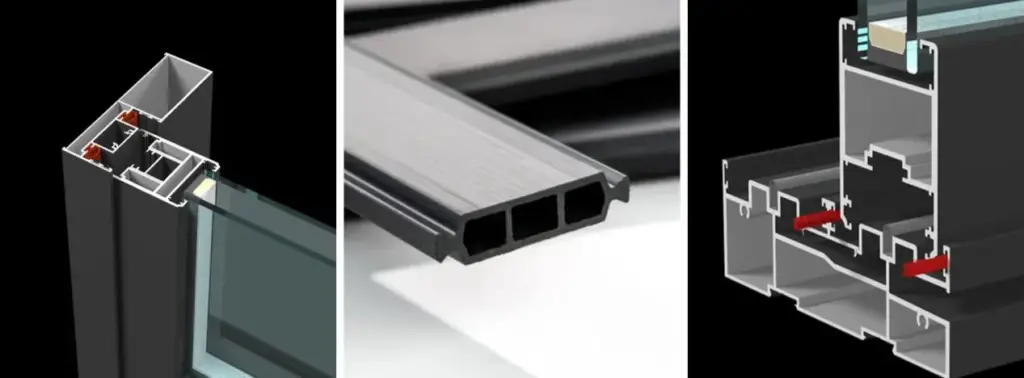
For soundproofing (important if you live near a busy street or have loud neighbors), laminated glass (two panes bonded with a plastic layer) dampens noise better than standard glass. Thicker frames and tight seals also help reduce sound transmission.
Hardware and Safety: Prioritize Smooth Operation and Security
A sliding door is only as good as its hardware. Cheap tracks or locks can lead to jamming, sticking, or even safety risks. Here’s what to look for:
Tracks: Choose durable, corrosion-resistant tracks (aluminum or stainless steel work best). For outdoor doors, opt for tracks with drainage holes to prevent water buildup, which can cause rust or jamming.
롤러: High-quality rollers (nylon or stainless steel) ensure smooth sliding. Look for adjustable rollers—they let you tweak the door’s height if it starts to stick over time.
자물쇠: Security is non-negotiable, especially for patio doors. Multi-point locking systems (which lock at the top, 맨 아래, and middle) are more secure than single-latch locks. Some models also offer keyed locks or smart locks (compatible with home security systems) for added peace of mind.
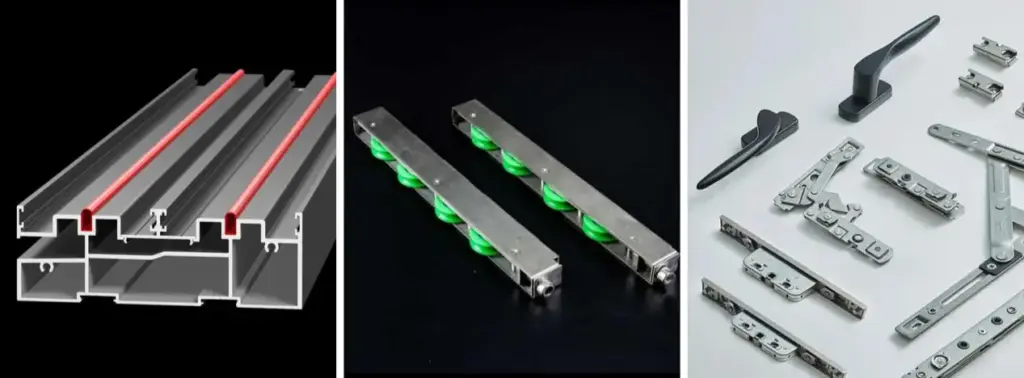
Test the door in person if possible—slide it back and forth to check for resistance. A well-made sliding door should glide easily with minimal effort.
Style and Aesthetics: Match Your Home’s Design
Sliding doors should complement your home’s architecture, not clash with it. Here’s how to align style with function:
Modern/minimalist homes: Aluminum frames with slim profiles and large glass panels work best. Choose matte black, white, or gray finishes for a sleek look. Frameless glass doors take this a step further, creating an almost invisible barrier between spaces.
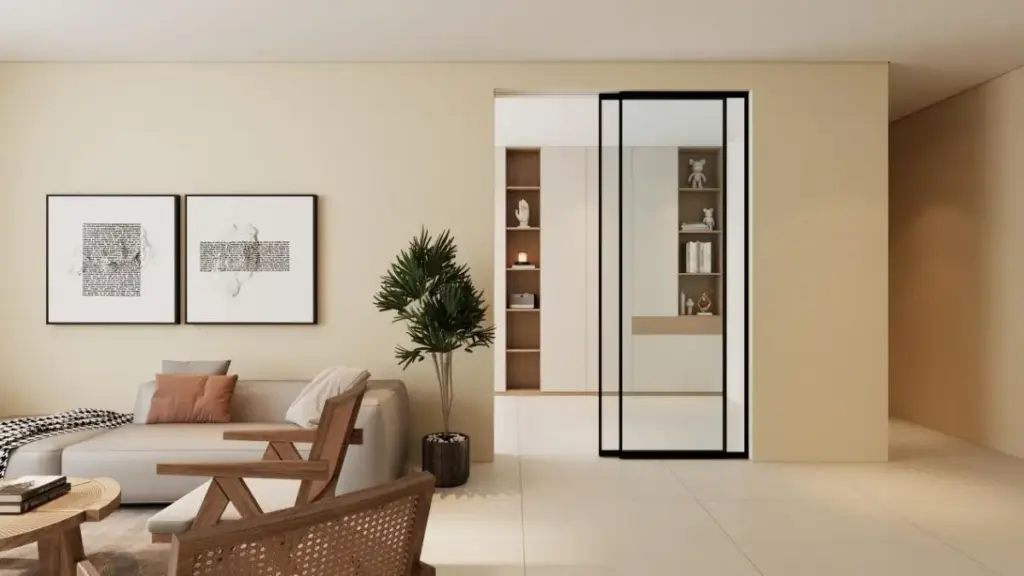
Traditional/cozy homes: Wood or wood-veneer 알루미늄 문 add warmth. Opt for raised panels or decorative glass (like frosted or leaded) to match classic trim or moldings.
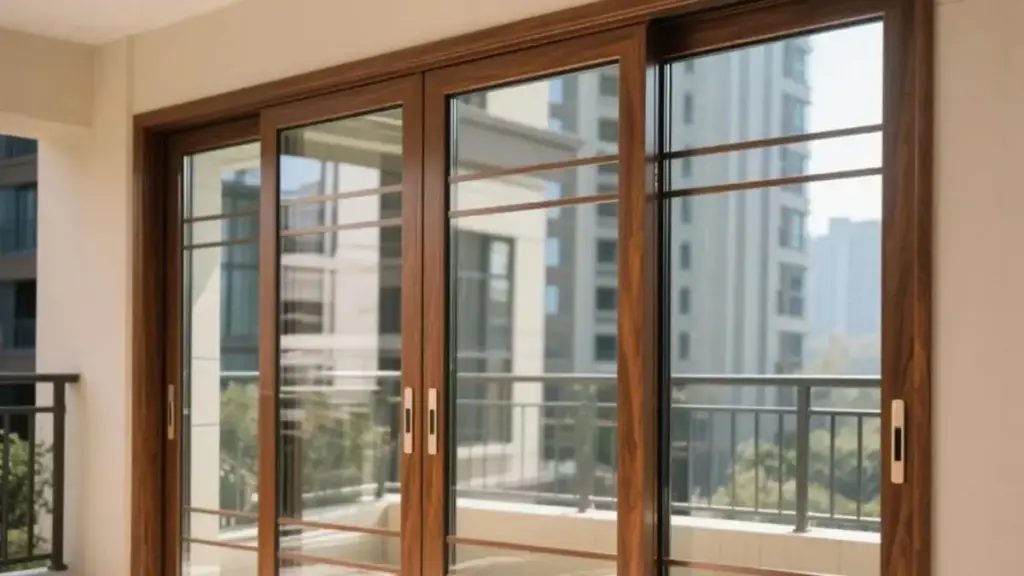
Industrial styles: Exposed aluminum frames with black hardware or metal accents fit the raw, utilitarian vibe.
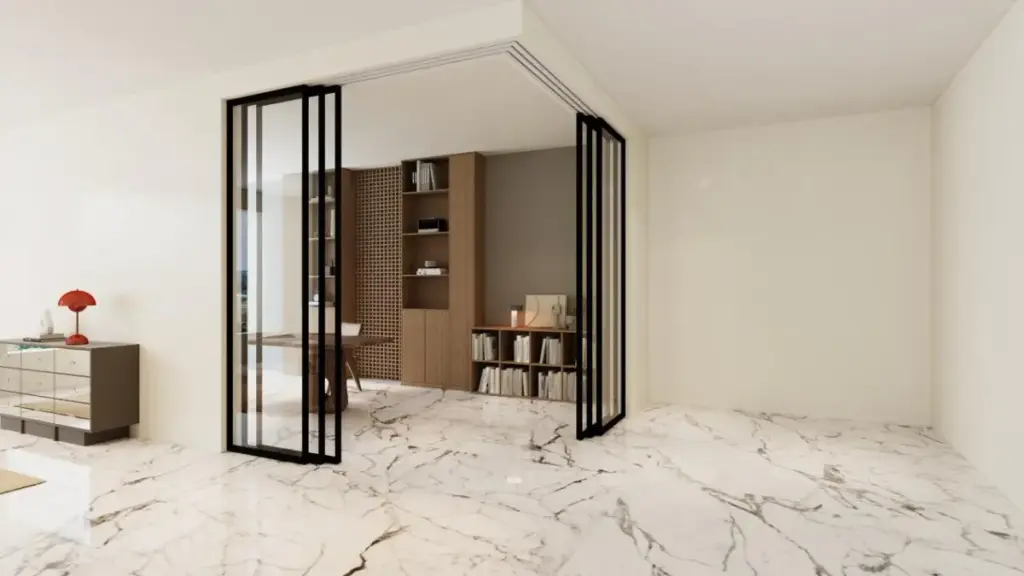
Don’t forget color—many manufacturers offer custom powder coating, so you can match the door to your walls, trim, or outdoor siding. For a cohesive look, coordinate hardware (처리, 자물쇠) with other fixtures in the room (예를 들어, cabinet pulls, light fixtures).
Installation: DIY vs. Professional—What’s Best?
Installing a sliding door requires precision—misalignment can lead to leaks, jamming, or poor energy efficiency. While handy homeowners might tackle small interior doors (like closet sliders), outdoor or large-panel doors are best left to professionals.
·DIY pros: Saves money; works for small, lightweight doors (vinyl closet sliders, 예를 들어).
·DIY cons: Risk of improper fitting, which voids warranties and leads to costly fixes. Requires tools like levels, drills, and saws—and experience with measuring and aligning tracks.
·Professional installation: Ensures proper alignment, weatherproofing, 그리고 안전. Most manufacturers (including ours) include professional installation with purchase, and it often comes with a warranty on labor.
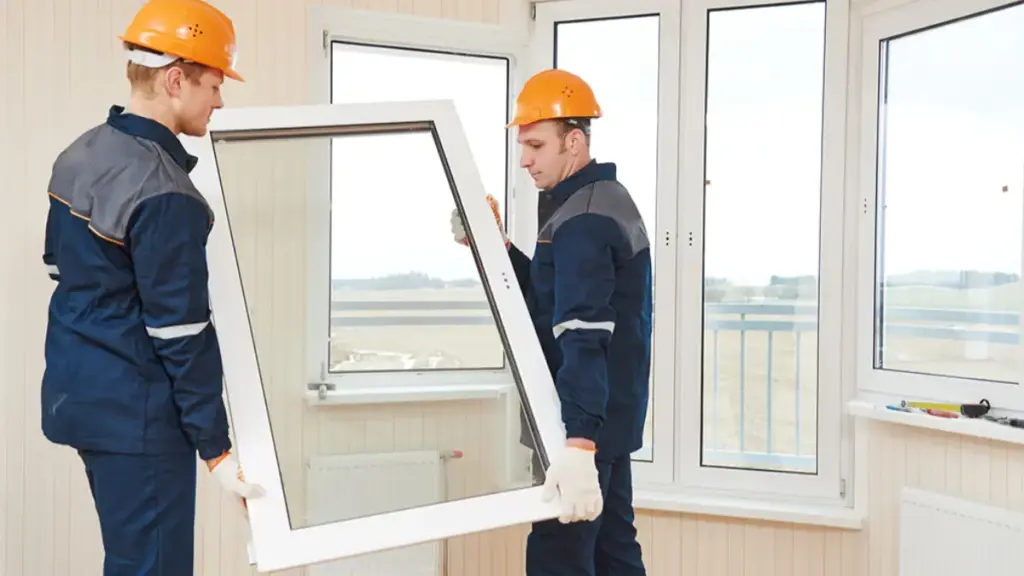
If you’re unsure, ask the manufacturer—they can recommend local installers or guide you on whether DIY is feasible for your specific door.
유지: Keep Your Sliding Door Looking and Working Like New
적절한 관리로, a quality sliding door can last 20+ 연령. Follow these tips:
·Clean tracks regularly: Dirt, leaves, and debris can clog tracks and cause jamming. Vacuum or brush them monthly, then wipe with a damp cloth.
·Lubricate rollers: Every 6–12 months, apply silicone-based lubricant to rollers and track hinges (avoid oil-based products—they attract dirt).
·Inspect weatherstripping: Check for cracks or wear annually. Replace strips if they’re damaged to maintain energy efficiency.
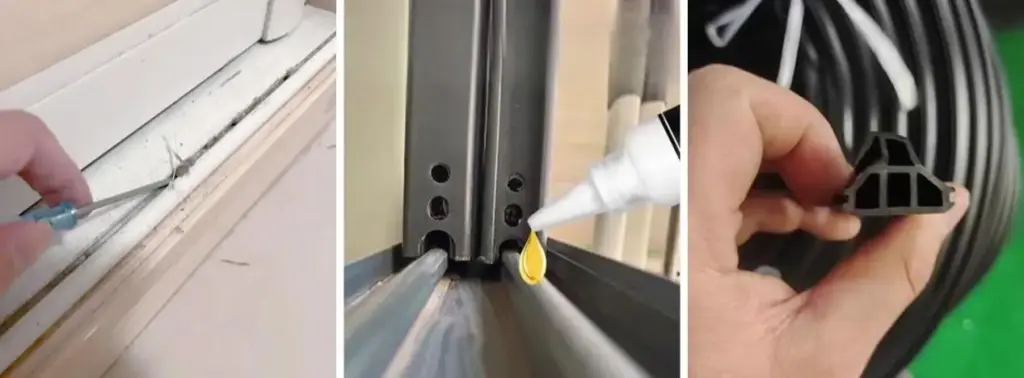
Clean glass and frames: Use mild soap and water for glass; avoid harsh chemicals (they can damage finishes). For aluminum frames, a soft cloth and glass cleaner work well.
As a 문과 창문 제조업체, we specialize in tailored sliding door solutions, from aluminum patio doors with thermal breaks to space-saving closet sliders in custom finishes. Our team can help you measure, select materials, and design a door that fits your home’s needs and style. Ready to transform your space? Contact us today for a free consultation—and let’s find your perfect sliding door.

